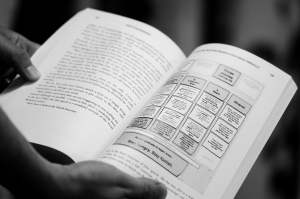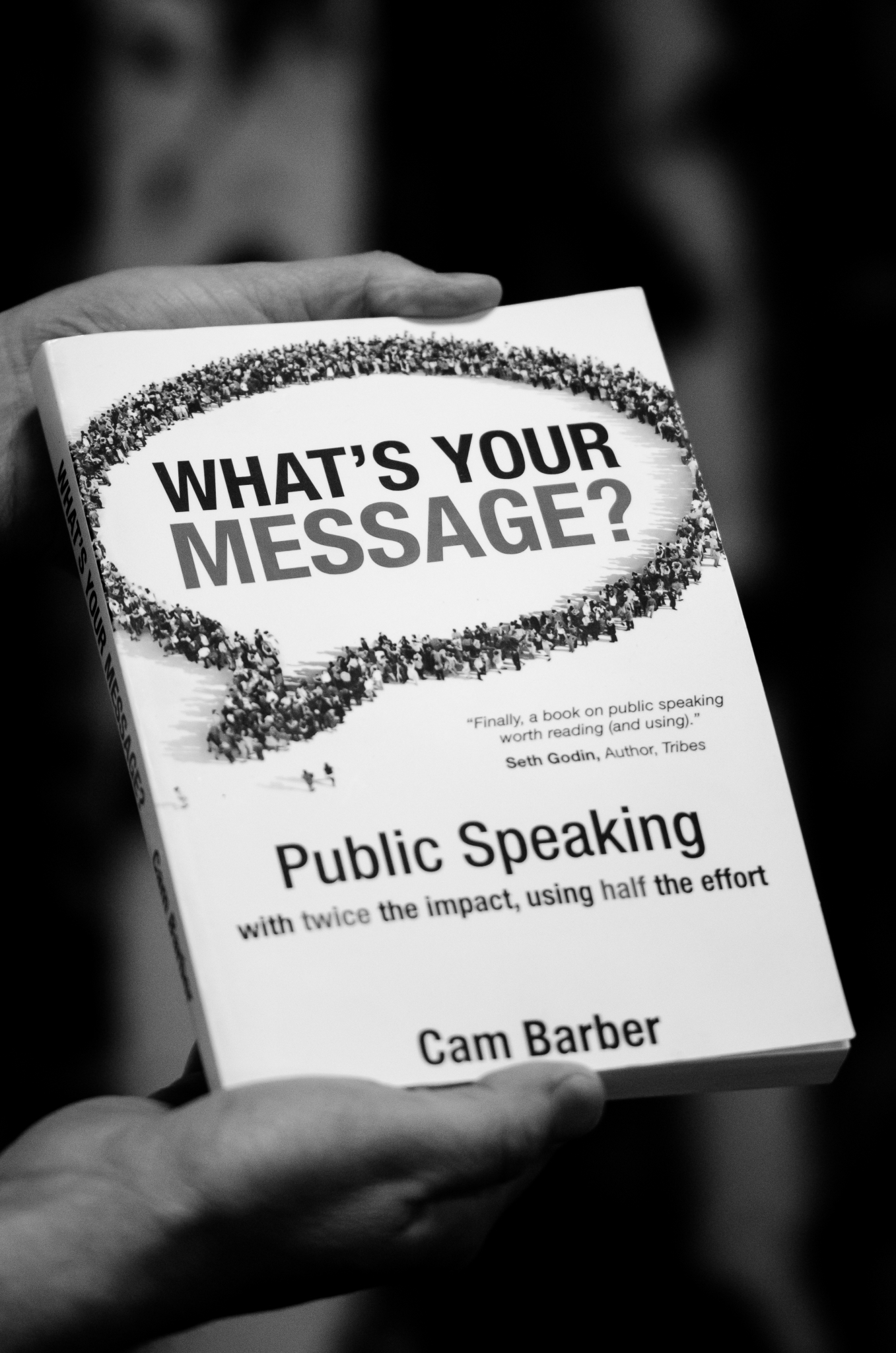What’s your message? Public speaking with twice the impact, using half the effort.
Author: Cam Barber
This book debunks several myths about public speaking and gives handy tips on how to structure, practise and deliver a talk. Overall, the book was highly appreciated by the members of the book club. The key takeaways for our group are outlined below.
First, you don’t have to be an actor to deliver a good talk. Most people aren’t actors, so don’t pretend to be one. There is also no right or wrong way to stand, move, or keep your hands while speaking. Just be who you are (as long as that’s not too extreme) and instead direct your attention on the talk’s message.
Second, there is also no such thing as the perfect slide show template. If you stay away from the worst ones, you’ll be fine. Once again, the most important thing is to have a clear message.
Third, if you don’t know how to start the talk, start by “Before we start,…”. Then you have already begun!
The message is therefore the most important part of your talk and is the main focus of this book. Each talk should have one big main message. This is the most important thing you want to deliver to the audience as a speaker. The whole purpose of the talk is to set you up to deliver that message. As a speaker, you should formulate the main message in writing, say three of four sentences, and learn it by heart. Not in bullet points. Learn the exact words that you are going to say. Finding a clear main message is not easy, but it is OK if it takes time. After all, it is the most important thing in your talk.
 Cam Barber also outlines a simple way to structure the talk that leads up to the main message. You should divide your talk into three ‘chunks’, where each chunk has its own key point. Just as for the main message, you should write these down and learn them by heart. And everything you say or show within each chunk should set you up for delivering the key point.
Cam Barber also outlines a simple way to structure the talk that leads up to the main message. You should divide your talk into three ‘chunks’, where each chunk has its own key point. Just as for the main message, you should write these down and learn them by heart. And everything you say or show within each chunk should set you up for delivering the key point.
Apart from a good structure, the chunk structure also gives you a simple way to rehearse your talk. Rather than flipping through all of your slides, or learning the entire talk by heart, you just repeat the key points and your main message. This won’t take more than a minute!
Finally, the book shifts focus from on-stage performance to the talk’s core message. So, when preparing for your next talk, don’t start with the slides. Start with distilling your main message and the key points. Once you have these, the rest is easy!

